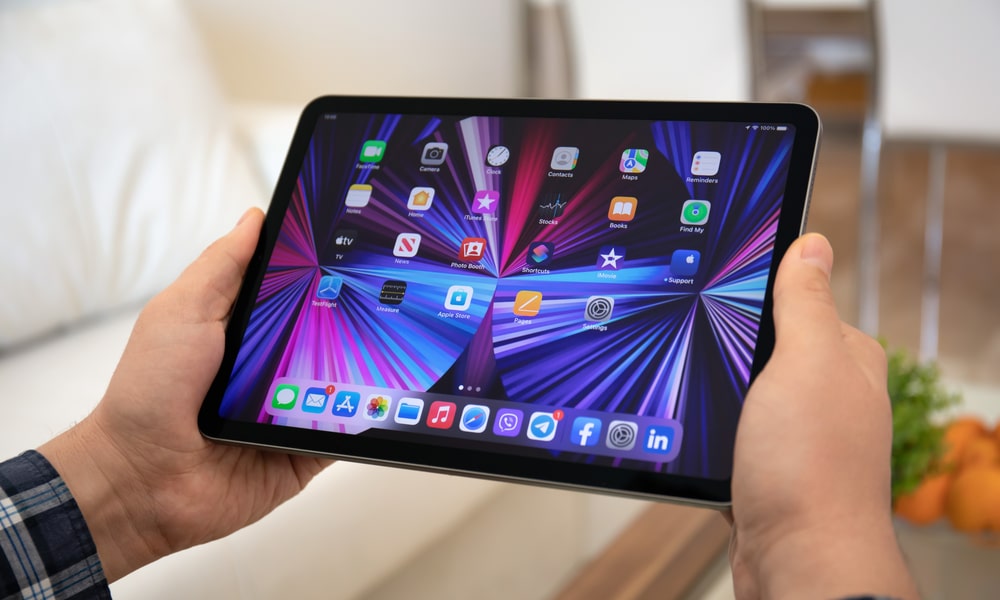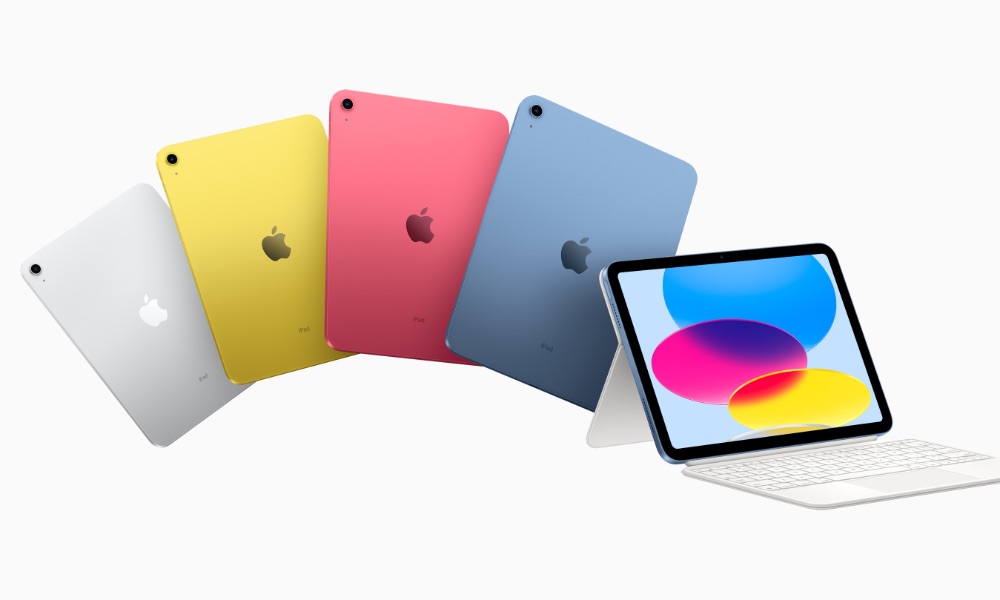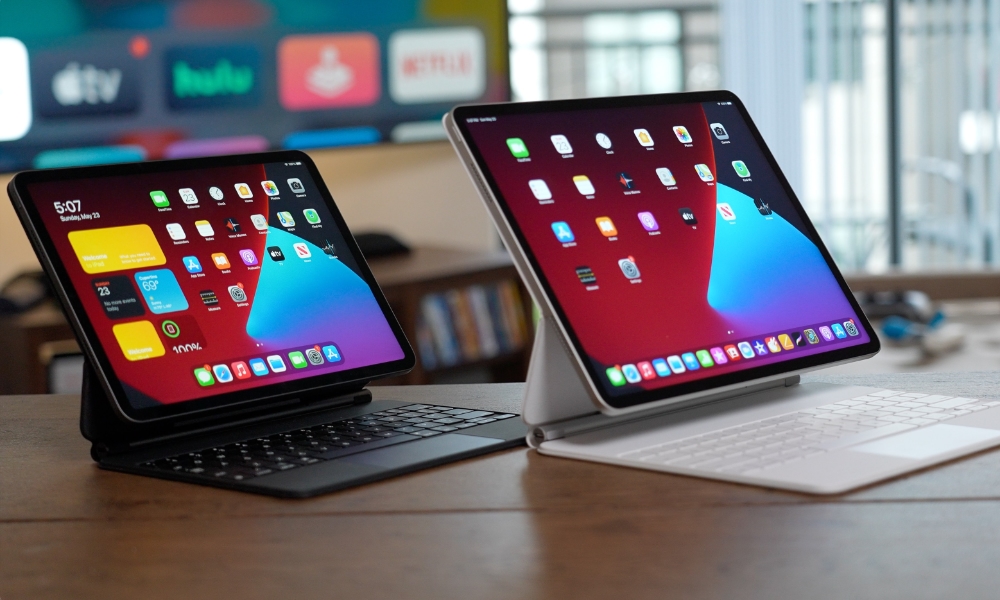How to Choose the Right iPad to Buy
 Credit: DenPhotos / Shutterstock
Credit: DenPhotos / Shutterstock
Toggle Dark Mode
For most of us, the iPad is the perfect tablet for our everyday lives. You get the benefits of an iPhone and some benefits you can only find on a laptop while having a bigger display and many apps specifically made for a tablet.
If you’re thinking of jumping onto the iPad bandwagon, then you’re about to have a great time.
However, Apple offers a total of four different iPad models right now — Five, if you count the two different iPad Pro models available.
With all these iPads, which one is the best for you? Getting a cheaper model might be a mistake if you’re a power user. The same goes if you’re a casual user who just wants to use the iPad every now and then.
Fear not. Choosing the right iPad for you is easier than you think. Here’s what you need to consider.
10th Generation iPad (2022)
The original iPad first came out a little over 13 years ago, and Apple has made it one of the best base tablets that you can find on the market.
However, this iPad has a lot of compromises. For instance, for the base model, you’ll only get 64GB of storage, which is just not enough anymore. And sure, you can go for the 256GB model, but you’ll need to spend at least $599 for it, which is the same price as the base iPad Air, which we’ll talk about in a moment.
The good news is that Apple finally updated the design of the first iPad. Now, just like all other models, you get a better design with no Home Button, USB-C, and Touch ID on the Power button. It’s also the only iPad to put the front FaceTime camera on the long edge, which makes it a good pick for those who spend a lot of time on video calls.
The processor and Apple Pencil support are still outdated, though. On the inside, you’ll get the A14 Bionic chip, which is the same one we saw on the iPhone 12 lineup. Granted, that’s not bad, but it’s definitely the worst processor on any current iPad model right now.
If you plan to also get an Apple Pencil, you should know that this model still supports the first-generation Apple Pencil. Yes, it’s that old model that you need to charge by plugging it into your iPad. The biggest problem? You need to charge it via a Lightning Port, which the iPad doesn’t have anymore. The upside? You won’t need to replace your Apple Pencil if you’re upgrading from an older standard iPad model.
So, if you’re someone who plans to use the iPad to take notes or do some intense work on it, we recommend you skip this model.
The base iPad is best for people who are only planning to use it to read, watch movies or shows, and play some light games. It’s also a great device to give your kids or someone who won’t use the iPad much.
However, if that’s you, it’s also worth considering the 2021 ninth-generation iPad, which Apple still sells alongside the newer model at an even better price. It’s got the older design with a Lightning port and Home Button on the front and only packs in an A13 chip, but that’s still more than enough power for watching videos, reading, surfing, and even doodling with the Apple Pencil.
The iPad mini
The iPad mini has gone through a lot of changes in recent years, and it’s become a great device for students, readers, and casual users who prefer smaller displays.
Unfortunately, despite being the smallest model available, it’s not the cheapest. The base model, which comes with only 64GB of storage, starts at $499, which isn’t necessarily budget-friendly.
The display is only 8.3 inches, which you’ll either love or hate, depending on your preferences. For reference, the iPad and iPad Air feature a 10.9-inch display.
On the inside, the iPad mini is powered by the A15 Bionic chip, which is definitely more modern than the iPad’s processor, and it’s more than enough for most people.
Because of the size, this iPad is perfect for people on the go. If you’re someone who’s constantly outside, packing the iPad mini is really easy and won’t take much space out of your bag.
Plus, thanks to the fact that this iPad supports the second-generation Apple Pencil, the iPad mini is perfect for students or people who like taking notes with a pen.
Despite its size, it’s also perfect for reading on the go. But if you plan to use your iPad to watch movies or YouTube videos, we recommend going for a larger model.
iPad Air
Spoiler alert: if you have the money, the iPad Air is the perfect model for most people. Sure, the base 64GB model starts at $599, but you get a perfect iPad for people who want a larger display for both work and play.
And that’s because of its processor. The iPad Air is the most affordable iPad that packs the M1 chip, something that we’ve only seen in previous iPad Pro models.
While it’s not as strong as an M2 iPad Pro, the M1 iPad Air is powerful enough to support demanding apps and multitasking like any other tablet.
While it’s missing a few key high-end features like Face ID, a 120Hz ProMotion display, Thunderbolt support, and better cameras, the iPad Air is basically a budget iPad Pro. You get support for the second-generation Apple Pencil, the Magic Keyboard, and even Wi-Fi 6 and 5G (if you opt for the Wi-Fi + Cellular version).
Unless you’re a person who needs at least 1TB of storage or more professional cameras on the iPad, the iPad Air is probably the best option for you. Plus, you would save at least $300, which is perfect to buy some extra iPad accessories.
The iPad Pro Models
Granted, you probably already know if the iPad Pro models are made for you or not.
Remember a few years ago when Apple said the iPad was the perfect laptop replacement? The company was talking about the iPad Pro.
These models offer a lot of power, a ton of features, and many apps that work perfectly on the iPad. And that’s all thanks to the M2 chip inside of them.
You read that right; both the 11-inch and 12.9-inch iPads feature the M2 chip, making them the most powerful iPads — and tablets — yet.
Besides the M2 chip, you also get a lot of extra features like ProMotion, which automatically adjusts the refresh rate on your iPad to preserve battery and give you smooth transitions, plus two cameras and a LiDAR sensor on the back.
Granted, not everyone is taking pictures with an iPad these days, but it’s nice to know that you can take amazing pictures and 4K videos with your tablet.
The biggest reason to get any iPad Pro is if you’re a power user. If you like to do some video or photo editing while on the go, you want to have up to 2TB of storage, or you need Thunderbolt support for fast data transfers, then these iPads are for you.
Fortunately, both models are mostly the same right now, so you’ll only need to take the screen size and quality into consideration when choosing both models. The two biggest differences are the price and the display resolution.
The 12-9-inch model features a Liquid Retina XDR mini-LED display, while the 11-inch offers a Liquid Retina display. While the 12.9-inch screen is better for professional photo and video editors who need perfect color and clarity, most people won’t even notice a difference, so don’t let this change your mind.
What can change your mind, though, is the price. The 11-inch iPad Pro starts at $799, whereas the 12.9-inch starts at $1,099 for the 128GB model.
As we said, this iPad is designed for serious power users, but if you want to get one, we recommend going for the 11-inch model. You’ll get a better price and might even get 512GB of storage for the same price as the 12.9-inch iPad Pro.
Choose the Right iPad for You
Apple offers a lot of iPads for all kinds of people, but the choice is actually pretty easy once you start looking at what they have to offer.
For most people, the iPad Air is the perfect option. You get everything you need as a casual user and a lot of power if you want to use it for work or school.
If you’re looking for something smaller, the iPad mini is the one for you. You won’t have any issues carrying with you, and you’ll also get a pretty fast, reliable iPad for work or school.
Most people should stay away from the 10th-generation iPad as it doesn’t offer anything that impressive, especially at its higher price which puts it in an awkward spot between its 9th-gen predecessor (which Apple still sells for $120 less) and the significantly better iPad Air.
As for the iPad Pro models? Those are really only for actual power users or people who can afford it — but even then, they can be overkill.












